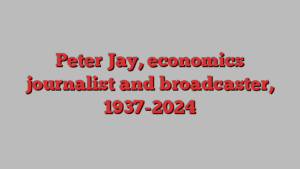
Remember when streaming used to be exciting? Remember when, after years of trawling around HMV, spending £20 on DVDs of single seasons of television, Netflix arrived and presented you with what felt like every episode of every amazing television show ever made, for six quid a month? It was a game-changer. It felt like the future.
But the future feels increasingly like a prison. This week Disney+ announced its “paid sharing program”, in which subscribers could add members outside their households for just five extra pounds a month. The press release presented this news like a golden act of unsolicited charity – although it’s obviously an attempt to squeeze more money out of punters by cracking down on password sharing.
While it might make business sense – more money means more shows can be made, plus Netflix has been doing this for ages anyway – it feels like yet another sign that the golden age of streaming is far behind us. The crackdown is just one facet of an industry meltdown that continues to put ridiculous pressure on the consumer.
Key to the meltdown is the sheer number of streaming services that now demand a monthly payment. Where once there was just Netflix, as a bottomless treasure trove of content, there is Amazon, Now, Apple, Disney, Paramount, Britbox, Hayu, Shudder, BFI Player and Mubi. On top of that, ITV has a paid tier, Channel 4 has a paid tier and even YouTube has a paid tier. In total, to watch everything streamed by all these platforms with all their bells and whistles, you would need to spend £1,452 a year. This works out at 8.5 BBC licence fees, or (to relate it to the pre-streaming age) roughly 75 DVD boxsets.
Don’t think this figure is going to stay put, either. Netflix has been steadily ramping up its prices since 2014, when it stuck a quid on the monthly membership. In 2017 it introduced a premium subscription, for £10. Prices went up again in 2019, 2020, 2021 and 2022 – now a top-end subscription costs £18 a month. Last year Disney+ jacked its subscription up by £3 a month, while Apple TV+ added £2. Paramount+ also put its price up this year. It feels like the streamers are starting to act like drug dealers, giving us all a cheap taste and then gouging us once we’re hooked.
To make matters even more soul-sapping, the viewing experience in 2024 is worse than it has ever been, thanks to advertising. Many streamers now offer a cheaper subscription for people willing to have shows interrupted by commercial breaks. Amazon, on the other hand, has taken a slightly different tack. Its default is to cram shows with annoying ad breaks, and the only way to stop them is to pay Amazon even more money.
And you already pay it a lot. It costs £95 annually to subscribe to Amazon, yet whenever you try to watch The Boys or The Lord of the Rings you have to pause the action every few minutes to watch an advert. The same way as if you watched a traditionally broadcast show on a commercial channel – but it doesn’t cost £95 a year to watch commercial channels on TV. It’s hard to shake the feeling that Amazon is trying to have it both ways – raking in money from subscriptions and adverts at the same time.
Even from a programme-making perspective, this rankles enormously. Watch, say, Broadchurch on ITV, and you’re watching a show built around ad breaks. Shows like this rise and fall to several miniature crescendos an episode, because the people who made it knew they had to work to keep our interest through the breaks. This doesn’t happen on Amazon shows. The breaks there seem arbitrary, barging in at set points in the episode regardless of what is going on. The people who made the episodes assumed that they would be watched ad-free, so jamming them full of commercials throws the rhythm off. It upsets the balance. I hate it so much.
after newsletter promotion
In other words, the streaming market in 2024 is overstuffed, overpriced and more interested in selling you stuff than providing you with entertainment. Streaming was supposed to revolutionise television, but right now it feels like it has only made things worse. Anyone else up for a trip to HMV?

